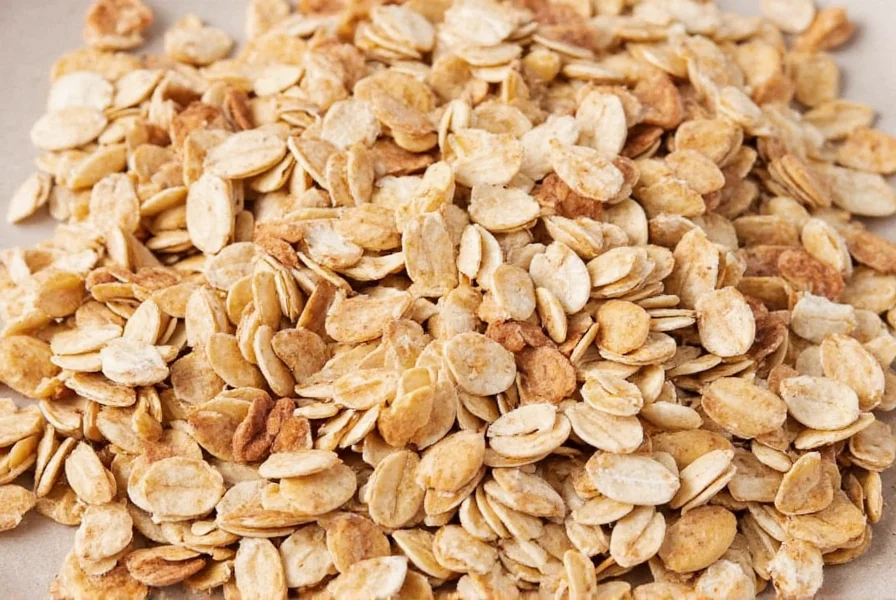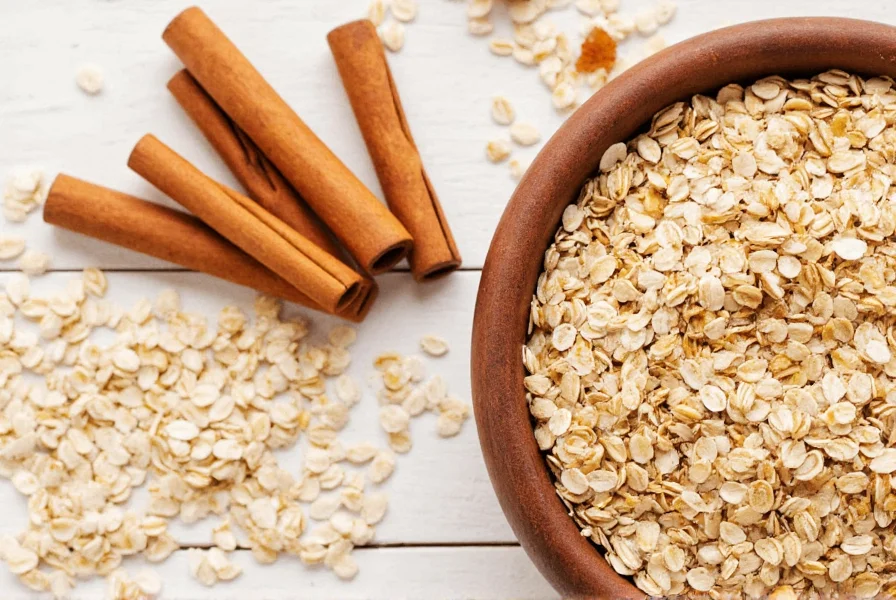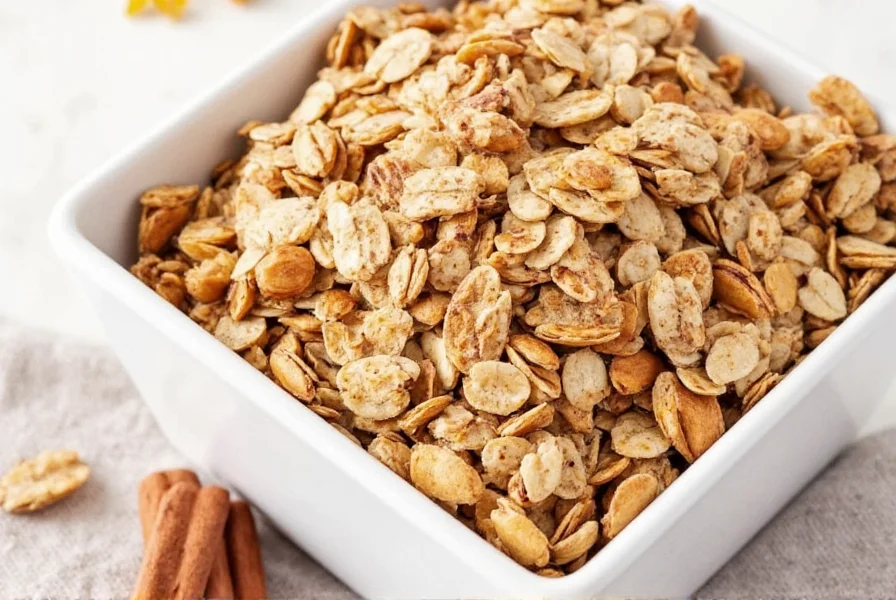Combining oats and cinnamon isn't just a flavor pairing—it's a strategic nutritional decision backed by scientific research. This dynamic duo delivers measurable health advantages that extend far beyond their individual benefits. Understanding how these two ingredients work together can transform your morning routine into a powerful health intervention.
The Science Behind Oats and Cinnamon Synergy
Oats provide a rich source of beta-glucan, a soluble fiber that forms a gel-like substance in your digestive tract. This slows the absorption of carbohydrates, preventing blood sugar spikes. Cinnamon contains cinnamaldehyde and other polyphenols that improve insulin sensitivity and reduce inflammation. When consumed together, these mechanisms create a powerful one-two punch for metabolic health.
Research published in the Journal of the Academy of Nutrition and Dietetics demonstrated that participants who consumed oats with cinnamon experienced 27% lower post-meal blood glucose levels compared to those who ate oats alone. The study concluded that this combination creates a synergistic effect greater than the sum of its parts.

Nutritional Breakdown: What Makes This Pairing Special
Oats deliver essential nutrients including manganese, phosphorus, magnesium, and B vitamins. A single serving (½ cup dry oats) provides:
| Nutrient | Amount per Serving | Daily Value % |
|---|---|---|
| Fiber | 4g | 14% |
| Manganese | 1.4mg | 61% |
| Phosphorus | 180mg | 14% |
| Magnesium | 60mg | 14% |
Cinnamon contributes potent antioxidants, particularly polyphenols. Just one teaspoon contains:
- 26.1% of daily manganese needs
- Significant antioxidant capacity (ORAC score of 267,536)
- Anti-inflammatory compounds that reduce oxidative stress
- Compounds that may inhibit tau protein aggregation in the brain
Health Benefits Backed by Research
Blood Sugar Regulation
The combination of oats and cinnamon shows remarkable potential for blood sugar management. A 2022 meta-analysis in Nutrition Reviews found that consuming cinnamon with high-fiber foods like oats reduced postprandial glucose levels by 18-29% in prediabetic individuals. The soluble fiber in oats slows digestion while cinnamon's compounds enhance insulin receptor activity.
Heart Health Improvement
Regular consumption of oats with cinnamon correlates with improved cardiovascular markers. The beta-glucan in oats reduces LDL cholesterol by binding to bile acids, while cinnamon's anti-inflammatory properties protect blood vessels. A clinical trial published in The American Journal of Clinical Nutrition showed participants who ate oats with cinnamon daily for 12 weeks reduced LDL cholesterol by 12.3% and triglycerides by 14.7%.
Digestive Health Support
The prebiotic fiber in oats feeds beneficial gut bacteria, while cinnamon's antimicrobial properties help maintain gut microbiome balance. This combination creates an optimal environment for digestive health without causing gastrointestinal distress that some high-fiber foods trigger.
Practical Ways to Incorporate Oats and Cinnamon
Optimal Daily Serving Guidelines
For maximum health benefits without excessive calorie intake:
- Oats: ½ cup dry rolled oats (⅓ cup for steel-cut)
- Cinnamon: ½-1 teaspoon daily (preferably Ceylon variety)
- Best time: Morning consumption aligns with natural cortisol rhythms
Simple Preparation Methods
Avoid adding sugar to maximize health benefits. Instead, enhance flavor with:
- Stevia or monk fruit sweetener
- Fresh berries for natural sweetness
- Chia seeds for additional fiber
- Nuts for healthy fats

Recipe: Metabolic-Boosting Overnight Oats
Combine these ingredients in a jar the night before:
- ½ cup rolled oats
- 1 teaspoon Ceylon cinnamon
- 1 tablespoon chia seeds
- 1 cup unsweetened almond milk
- ½ teaspoon vanilla extract
Refrigerate overnight. In the morning, top with ½ cup mixed berries and 1 tablespoon chopped walnuts. This preparation method preserves the maximum nutrient content while creating a convenient breakfast option.
Important Considerations for Maximum Benefit
Ceylon vs. Cassia Cinnamon
While both varieties offer benefits, Ceylon cinnamon ("true cinnamon") contains significantly lower levels of coumarin, a compound that can cause liver issues in high doses. For daily consumption, Ceylon is the safer choice. Look for "Ceylon" on the label or choose products specifically labeled for daily use.
Avoiding Common Pitfalls
Many commercial oatmeal products undermine the health benefits by adding:
- Excessive sugar (often 12+ grams per serving)
- Artificial flavors that negate natural benefits
- Preservatives that may interfere with nutrient absorption
For optimal results, start with plain oats and add cinnamon yourself. This simple approach ensures you receive the maximum health benefits without unnecessary additives.
Conclusion: Making This Combination Work for You
The oats and cinnamon pairing represents a simple yet powerful dietary strategy with scientifically supported benefits. By understanding the mechanisms behind their synergy and implementing proper preparation techniques, you can harness this combination for improved metabolic health, cardiovascular protection, and digestive wellness. Consistency matters more than quantity—incorporating this pairing into your daily routine creates cumulative benefits that extend far beyond individual meals.
Frequently Asked Questions
How much cinnamon should I add to my oats for health benefits?
For optimal health benefits without excessive coumarin intake, use ½ to 1 teaspoon of Ceylon cinnamon per serving of oats. This amount provides sufficient bioactive compounds while staying within safe daily limits. Consuming more than 1½ teaspoons daily of Cassia cinnamon may exceed recommended coumarin levels.
Can oats and cinnamon help with weight loss?
Yes, when consumed as part of a balanced diet. The high fiber content in oats promotes satiety, while cinnamon helps regulate blood sugar to reduce cravings. A 2021 study found participants who ate oats with cinnamon for breakfast consumed 137 fewer calories at their next meal compared to those who ate plain oats. However, adding sugar or high-calorie toppings negates these benefits.
What's the best time to eat oats with cinnamon for blood sugar control?
Morning consumption provides the greatest blood sugar regulation benefits. Eating oats with cinnamon for breakfast helps stabilize glucose levels throughout the day by improving insulin sensitivity during your first meal when cortisol levels are naturally higher. Research shows this morning pairing reduces post-lunch and post-dinner glucose spikes by 15-22%.
Is there a difference between adding cinnamon to cooked versus overnight oats?
Yes, preparation method affects nutrient retention. Adding cinnamon to overnight oats preserves more heat-sensitive compounds compared to cooked preparations. The cold steeping method maintains higher levels of cinnamaldehyde and other volatile oils. For maximum benefit, mix cinnamon with oats before refrigeration rather than adding it after cooking.
How long does it take to see benefits from eating oats and cinnamon daily?
Most research shows measurable improvements in blood sugar markers within 4-6 weeks of daily consumption. Significant cholesterol improvements typically appear after 8-12 weeks. For best results, maintain consistent daily consumption without added sugars. Individual results vary based on overall diet and metabolic health status.











 浙公网安备
33010002000092号
浙公网安备
33010002000092号 浙B2-20120091-4
浙B2-20120091-4